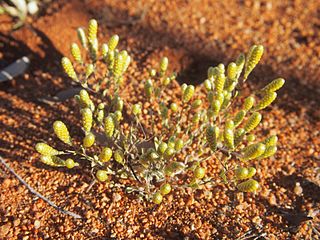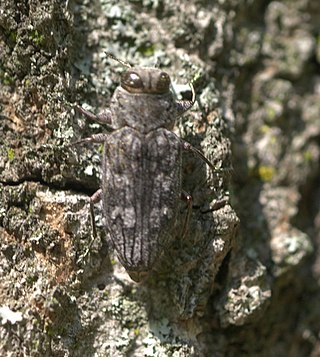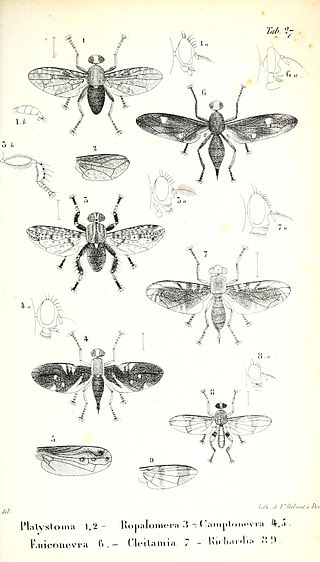
An embryo is the initial stage of development for a multicellular organism. In organisms that reproduce sexually, embryonic development is the part of the life cycle that begins just after fertilization of the female egg cell by the male sperm cell. The resulting fusion of these two cells produces a single-celled zygote that undergoes many cell divisions that produce cells known as blastomeres. The blastomeres are arranged as a solid ball that when reaching a certain size, called a morula, takes in fluid to create a cavity called a blastocoel. The structure is then termed a blastula, or a blastocyst in mammals.

Herring are various species of forage fish, mostly belonging to the family of Clupeidae.

The Integrated Taxonomic Information System (ITIS) is an American partnership of federal agencies designed to provide consistent and reliable information on the taxonomy of biological species. ITIS was originally formed in 1996 as an interagency group within the US federal government, involving several US federal agencies, and has now become an international body, with Canadian and Mexican government agencies participating. The database draws from a large community of taxonomic experts. Primary content staff are housed at the Smithsonian National Museum of Natural History and IT services are provided by a US Geological Survey facility in Denver. The primary focus of ITIS is North American species, but many biological groups exist worldwide and ITIS collaborates with other agencies to increase its global coverage.

Genetic pollution is a term for uncontrolled gene flow into wild populations. It is defined as "the dispersal of contaminated altered genes from genetically engineered organisms to natural organisms, esp. by cross-pollination", but has come to be used in some broader ways. It is related to the population genetics concept of gene flow, and genetic rescue, which is genetic material intentionally introduced to increase the fitness of a population. It is called genetic pollution when it negatively impacts the fitness of a population, such as through outbreeding depression and the introduction of unwanted phenotypes which can lead to extinction.

Lachesillidae is a family of Psocodea belonging to the suborder Psocomorpha. Members of the family are characterized by a rounded, free areola postica in their wings. Males have diverse sclerotized genitalic structures. The family includes more than 400 species, most of them in the genus Lachesilla.

The red-tailed laughingthrush is a species of bird in the laughingthrush family Leiothrichidae. It is found in the montane forests of Myanmar, Laos, southern China and central Vietnam

Angianthus is a genus of flowering plants in the family Asteraceae. All species of this genus are endemic to Australia.

Salpingidae or narrow-waisted bark beetles is a family of beetles in the superfamily Tenebrionoidea. The species are small, about 1.5 – 7 mm in length. The family is globally distributed and consists of about 45 genera and 300 species, which are generally found in the temperate regions of both hemispheres. The family is mainly associated with plants as well as with ascomycete and hyphomycete fungi. Some members of the family are associated with unusual habitats, like Aegialites and Antarcticodomus, which are found in coastal areas including the intertidal zone, with former feeding on algae.

The Taiwanese brown-toothed shrew is a species of shrew in the tribe Nectogalini. It is found only in Taiwan. It prefers dense ground cover in forests and subalpine shrublands in high mountains of central Taiwan. Its placement in Episoriculus has been questioned, with genetic analysis finding that it is more basal within Nectogalini than other members of Episoriculus.

Chrysobothris is a genus of metallic wood-boring beetles in the family Buprestidae. There are at least 690 described species in Chrysobothris.

The Ropalomeridae are a family of acalyptrate flies.

Euriphene milnei, the cinnamon nymph, is a butterfly in the family Nymphalidae. It is found in eastern Nigeria, Cameroon, the Republic of the Congo and the Democratic Republic of the Congo (Equateur). The habitat consists of wetter forests.

Asplenium milnei is a ground fern only found on Lord Howe Island. Commonly seen in lowland areas.

iNaturalist is an American 501(c)(3) nonprofit social network of naturalists, citizen scientists, and biologists built on the concept of mapping and sharing observations of biodiversity across the globe. iNaturalist may be accessed via its website or from its mobile applications. iNaturalist includes an automated species identification tool, and users further assist each other in identifying organisms from photographs and even sound recordings. As of 9 July 2024, iNaturalist users had contributed approximately 197,660,888 observations of plants, animals, fungi, and other organisms worldwide, and 290,007 users were active in the previous 30 days.

Abrodictyum caudatum is an epiphytic fern, found in rainforests in eastern Australia.

Psyllipsocidae is a family of cave barklice in the order Psocodea. There are about 7 genera and more than 70 described species in Psyllipsocidae.

Trogiidae is a family of granary booklice in the order Psocodea. There are about 11 genera and more than 50 described species in Trogiidae.
Phyllomyza is a genus of freeloader flies in the family Milichiidae. There are at least 30 described species in Phyllomyza.
Animal Ethics is a nonprofit organization formed to promote discussion and debate around issues in animal ethics and to provide information and resources for animal advocates. They also do outreach work in several countries on the issue of speciesism. Their aim is to create a world where moral consideration is extended to all sentient beings. The organization's website covers topics such as speciesism, sentience, veganism and wild animal suffering and has content translated into several languages.

















